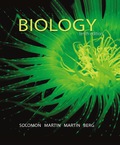
EBK BIOLOGY
10th Edition
ISBN: 8220100474729
Author: Martin
Publisher: Cengage Learning US
expand_more
expand_more
format_list_bulleted
Concept explainers
Question
Chapter 50.7, Problem 2C
Summary Introduction
To describe: Pelvic inflammatory disease (PID).
Introduction: Reproductive system (or genital system) is involved in sexual reproduction. The male and female reproductive systems function to propagate the species. Sexually transmitted diseases (STDs) are communicable disease transmitted by sexual or genital contact. It is caused by bacteria, virus, or
Summary Introduction
To determine: The causes of Pelvic inflammatory disease (PID).
Introduction: Reproductive system (or genital system) is involved in sexual reproduction. The male and female reproductive systems function to propagate the species. Sexually transmitted diseases (STDs) are disease transmitted by sexual or genital contact. It is caused by bacteria, virus, or parasites.
Expert Solution & Answer
Want to see the full answer?
Check out a sample textbook solution
Students have asked these similar questions
What is the structure and function of Eukaryotic cells, including their organelles? How are Eukaryotic cells different than Prokaryotic cells, in terms of evolution which form of the cell might have came first? How do Eukaryotic cells become malignant (cancerous)?
What are the roles of DNA and proteins inside of the cell? What are the building blocks or molecular components of the DNA and proteins? How are proteins produced within the cell? What connection is there between DNA, proteins, and the cell cycle? What is the relationship between DNA, proteins, and Cancer?
Why cells go through various types of cell division and how eukaryotic cells control cell growth through the cell cycle control system?
Chapter 50 Solutions
EBK BIOLOGY
Ch. 50.1 - Prob. 1LOCh. 50.1 - Distinguish among budding, fragmentation, and...Ch. 50.1 - Prob. 2CCh. 50.2 - Relate the structure of each organ of the human...Ch. 50.2 - Trace the passage of sperm cells through the human...Ch. 50.2 - Prob. 4LOCh. 50.2 - Prob. 1CCh. 50.2 - Prob. 2CCh. 50.2 - Prob. 3CCh. 50.2 - Prob. 4C
Ch. 50.3 - Prob. 5LOCh. 50.3 - Trace the development of a human egg and trace its...Ch. 50.3 - Describe the endocrine regulation of reproduction...Ch. 50.3 - Prob. 1CCh. 50.3 - Prob. 2CCh. 50.3 - Prob. 3CCh. 50.4 - Prob. 8LOCh. 50.4 - Prob. 1CCh. 50.4 - Prob. 2CCh. 50.4 - Which hormones most affect the birth process? What...Ch. 50.5 - Prob. 9LOCh. 50.5 - Prob. 1CCh. 50.6 - Prob. 10LOCh. 50.6 - Prob. 1CCh. 50.6 - Prob. 2CCh. 50.6 - Prob. 3CCh. 50.7 - Prob. 11LOCh. 50.7 - Prob. 1CCh. 50.7 - Prob. 2CCh. 50 - Hermaphroditism (a) is a form of asexual...Ch. 50 - Prob. 2TYUCh. 50 - Prob. 3TYUCh. 50 - Prob. 4TYUCh. 50 - Prob. 5TYUCh. 50 - Test Your Understanding 6 After ovulation, the...Ch. 50 - Prob. 7TYUCh. 50 - Prob. 8TYUCh. 50 - Prob. 9TYUCh. 50 - Test Your Understanding 10 Which sequence best...Ch. 50 - Prob. 11TYUCh. 50 - Test Your Understanding 12 INTERPRET DATA Examine...Ch. 50 - Test Your Understanding 13 EVOLUTION LINK Contrast...Ch. 50 - Prob. 14TYUCh. 50 - Test Your Understanding 15 SCIENCE, TECHNOLOGY,...Ch. 50 - Test Your Understanding 16 SCIENCE, TECHNOLOGY,...
Knowledge Booster
Learn more about
Need a deep-dive on the concept behind this application? Look no further. Learn more about this topic, biology and related others by exploring similar questions and additional content below.Similar questions
- In one paragraph show how atoms and they're structure are related to the structure of dna and proteins. Talk about what atoms are. what they're made of, why chemical bonding is important to DNA?arrow_forwardWhat are the structure and properties of atoms and chemical bonds (especially how they relate to DNA and proteins).arrow_forwardThe Sentinel Cell: Nature’s Answer to Cancer?arrow_forward
- Molecular Biology Question You are working to characterize a novel protein in mice. Analysis shows that high levels of the primary transcript that codes for this protein are found in tissue from the brain, muscle, liver, and pancreas. However, an antibody that recognizes the C-terminal portion of the protein indicates that the protein is present in brain, muscle, and liver, but not in the pancreas. What is the most likely explanation for this result?arrow_forwardMolecular Biology Explain/discuss how “slow stop” and “quick/fast stop” mutants wereused to identify different protein involved in DNA replication in E. coli.arrow_forwardMolecular Biology Question A gene that codes for a protein was removed from a eukaryotic cell and inserted into a prokaryotic cell. Although the gene was successfully transcribed and translated, it produced a different protein than it produced in the eukaryotic cell. What is the most likely explanation?arrow_forward
- Molecular Biology LIST three characteristics of origins of replicationarrow_forwardMolecular Biology Question Please help. Thank you For E coli DNA polymerase III, give the structure and function of the b-clamp sub-complex. Describe how the structure of this sub-complex is important for it’s function.arrow_forwardMolecular Biology LIST three characteristics of DNA Polymerasesarrow_forward
arrow_back_ios
SEE MORE QUESTIONS
arrow_forward_ios
Recommended textbooks for you
 Human Heredity: Principles and Issues (MindTap Co...BiologyISBN:9781305251052Author:Michael CummingsPublisher:Cengage Learning
Human Heredity: Principles and Issues (MindTap Co...BiologyISBN:9781305251052Author:Michael CummingsPublisher:Cengage Learning Principles Of Radiographic Imaging: An Art And A ...Health & NutritionISBN:9781337711067Author:Richard R. Carlton, Arlene M. Adler, Vesna BalacPublisher:Cengage Learning
Principles Of Radiographic Imaging: An Art And A ...Health & NutritionISBN:9781337711067Author:Richard R. Carlton, Arlene M. Adler, Vesna BalacPublisher:Cengage Learning Biology (MindTap Course List)BiologyISBN:9781337392938Author:Eldra Solomon, Charles Martin, Diana W. Martin, Linda R. BergPublisher:Cengage Learning
Biology (MindTap Course List)BiologyISBN:9781337392938Author:Eldra Solomon, Charles Martin, Diana W. Martin, Linda R. BergPublisher:Cengage Learning



Human Heredity: Principles and Issues (MindTap Co...
Biology
ISBN:9781305251052
Author:Michael Cummings
Publisher:Cengage Learning


Principles Of Radiographic Imaging: An Art And A ...
Health & Nutrition
ISBN:9781337711067
Author:Richard R. Carlton, Arlene M. Adler, Vesna Balac
Publisher:Cengage Learning

Biology (MindTap Course List)
Biology
ISBN:9781337392938
Author:Eldra Solomon, Charles Martin, Diana W. Martin, Linda R. Berg
Publisher:Cengage Learning
Molecular Techniques: Basic Concepts; Author: Dr. A's Clinical Lab Videos;https://www.youtube.com/watch?v=7HFHZy8h6z0;License: Standard Youtube License